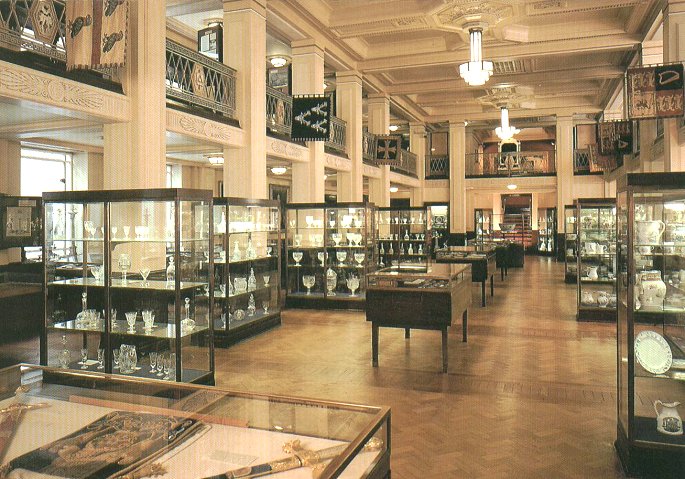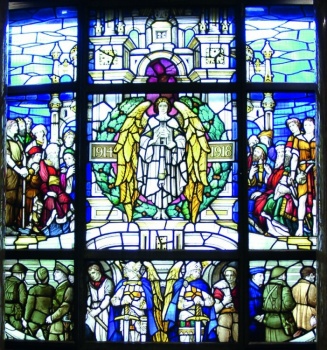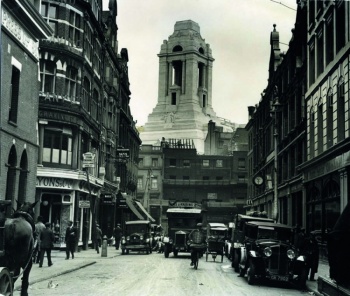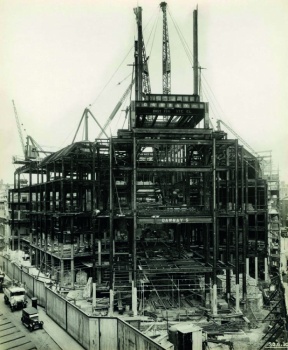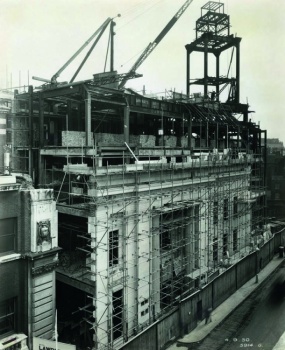En:Freemasons Hall London
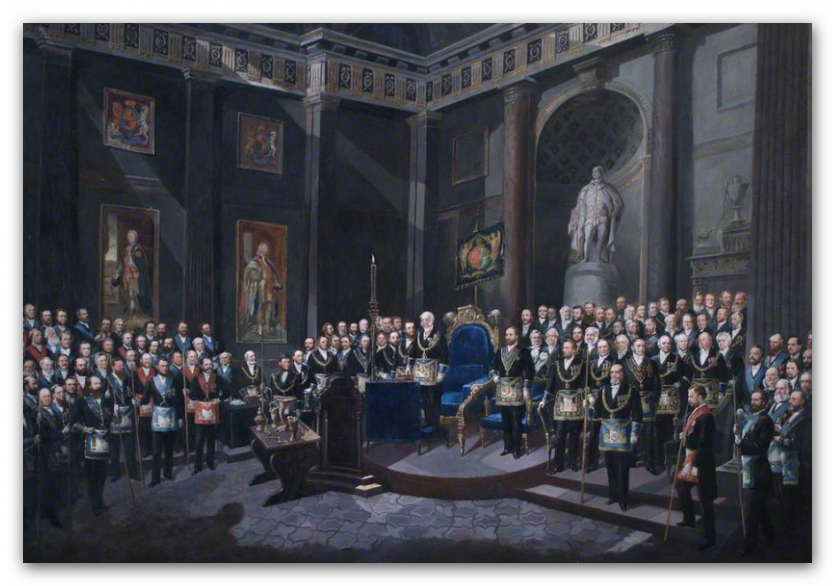
http://www.bbc.co.uk/arts/yourpaintings/paintings/search/located_at/the-library-and-musuem-of-freemasonry-7075-locations
Courtesy of: freemasonry-cg.com
Freemasons Hall London
Library and Museum
Source: Phoenixmasonry
The Library and Museum of the United Grand Lodge of England houses one of the finest collections of Masonic material in the world. It is open to the public, Monday to Friday, free of charge.
A changing series of exhibitions portray the history of Freemasonry in England and specific aspects of Masonic life. A tremendous variety of objects including Wedgewood, glass, metalwares - even bedwarmers - have, over the centuries, been produced with Masonic decoration.
The Museum's collections are extensive including pottery and porcelain, glassware, silver, furniture and clocks, Masonic jewels and regalia. Items belonging to famous and royal Freemasons including Winston Churchill and Edward VII are on display together with examples from the Museum's extensive collection of prints and engravings, photographs and ephemera.
The origin of Fremasons Hall as a memory of the fallen
Source: Freemasonry today
While the peace treaties after the First World War were still being negotiated in Versailles, following the armistice on 11 November 1918, the United Grand Lodge of England began preparations for its own masonic peace celebration in London. In June 1919, guests from lodges in Ireland, Scotland, America, Canada, New Zealand and England enjoyed a week of activities, including visits to the masonic schools and the Houses of Parliament. A peace medal was issued to those who attended the special Grand Lodge meeting on 27 June at the Royal Albert Hall.
The Grand Master, HRH The Duke of Connaught, was unable to attend, but he asked Lord Ampthill, the Pro Grand Master, to read a series of messages. One of these spoke of ‘a perpetual memorial’ to ‘honour the many brethren who fell during the war’. For the Grand Master, ‘The great and continued growth of Freemasonry amongst us demands a central home; and I wish it to be considered whether the question of erecting that home in this metropolis of the empire… would not be the most fitting peace memorial.’
With individual lodges considering what form their own memorials should take, the issue was raised at the Grand Lodge meeting in September 1919. Charles Goff from Fortitude and Old Cumberland Lodge, No. 12, asked if consideration had been given to other forms of memorial – particularly a fund to support Freemasons wounded during the war or their dependants. Charles also asked whether a major building project should proceed at a time of housing shortage. Although several lodges and Provinces decided to support local hospitals, Grand Lodge elected to proceed with its new temple.
MOVING FORWARD
In January 1920 details of the campaign to raise funds for the new building were distributed to lodges and individual members. The target was £1 million, giving the campaign its name – the Masonic Million Memorial Fund. Contributions were to be marked by the award of medals. Members who contributed at least 10 guineas (£10.50) were to receive a silver medal and those who gave 100 guineas (£105) or more, a gold medal. Lodges that contributed an average of 10 guineas per member were to be recorded in the new building as Hall Stone Lodges and the Master of each entitled to wear a special medal as a collarette. By the end of the appeal, 53,224 individual medals had been issued and 1,321 lodges had qualified as Hall Stone Lodges.
A design by architects HV Ashley and F Winton Newman was chosen and building work started in 1927. Construction began at the western corner of the new building, where houses on Great Queen Street had been demolished, and progressed eastwards.
The new Masonic Peace Memorial, as it was called, was dedicated on 19 July 1933. The theme of the memorial window outside the Grand Temple was the attainment of peace through sacrifice. Its main feature was the figure of peace holding a model of the tower façade of the building. In the lower panels were shown fighting men, civilians and pilgrims ascending a winding staircase towards the angel of peace.
In June 1938, the Building Committee announced that a memorial shrine, to be designed by Walter Gilbert, would be placed under the memorial window. Its symbols portrayed peace and the attainment of eternal life. It took the form of a bronze casket resting on an ark among reeds, the boat indicative of a journey that had come to an end. In the centre of the front panel a relief showed the hand of God in which rested the soul of man. At the four corners stood pairs of winged seraphim with golden trumpets and across its front were gilded figures of Moses, Joshua, Solomon and St George.
In December 1914 Grand Lodge had begun to compile a Roll of Honour of all members who had died in the war. In June 1921, the roll was declared complete, listing 3,078 names, and was printed in book form. After completion of the memorial shrine, the Roll of Honour, with the addition of over 350 names, was displayed within it on a parchment roll.
The Roll of Honour was guarded by kneeling figures representing the four fighting services (Royal Navy, Royal Marines, Army and Royal Flying Corps). By the time all these memorials were complete, the country was already in the midst of another war. Freemasons’ Hall continued to operate during that Second World War and survived largely undamaged so that it can be visited today.
Videos
<videoflash>olIjEnOHuNE</videoflash>
Original Video From: Freemason Movies Description: Freemasons Hall. Spectacular Art Deco building in the heart of London.
<videoflash>xri4ghD1epA</videoflash>

